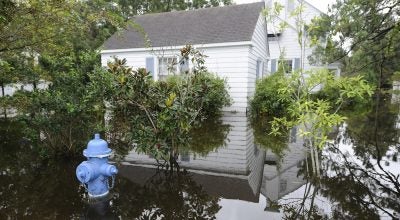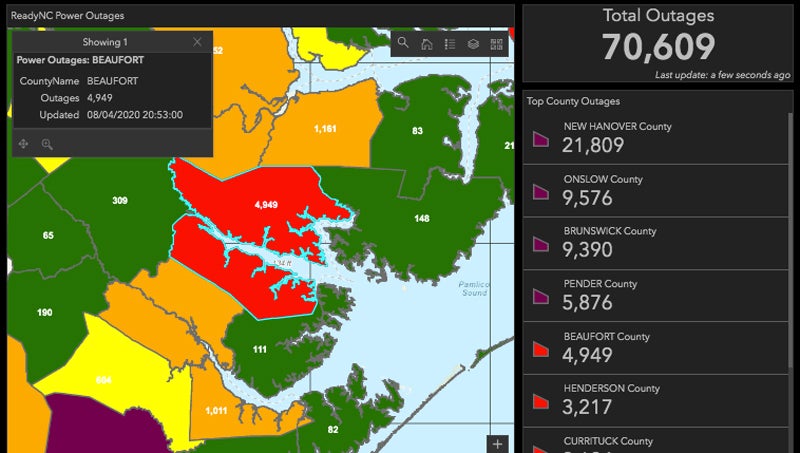What to put in a family emergency kit
Published 12:17 pm Tuesday, September 3, 2019
On Tuesday morning, the National Weather Service at Newport/Morehead City recommended eastern North Carolina residents finish preparations for possible impacts from Hurricane Dorian by the end of the day on Wednesday. The following are recommendations from ReadyNC on items every family should have in their emergency kit. Many items can be found in the average household, and it is important to have them all in one place.
- Water — one gallon per person per day for three to seven days
- Food — non-perishable and canned food supply for three to seven days
- Battery-powered or hand crank radio and National oceanic and Atmospheric Administration (NOAA) Weather Radio with extra batteries
- Cell phone with charger
- First aid kit and first aid book
- Flashlight and extra batteries
- Manual can opener for food
- Anti-bacterial hand wipes or gel
- Wrench or pliers to turn off water
- Blanket or sleeping bag – one per person
- Prescription medications and glasses
- Seasonal change of clothing, including sturdy shoes
- Toothbrush, toothpaste, soap, feminine supplies
- Extra house and car keys
- Important documents – insurance policies, copy of driver’s license, Social Security card, bank account records
- Fire extinguisher
- Cash and change
- Books, games or cards
You should have basic first aid supplies on hand to help you if you have an injured family member or friend after an emergency. It is important to know how to treat minor injuries. Simply having a first aid kit can help you stop bleeding, avoid infection and assist in sanitization.
- Two pairs of latex or other germ-free gloves (if you are allergic to latex)
- Germ-free bandages to stop bleeding
- Cleansing agent/soap and antibiotic towels
- Antibiotic cream
- Burn cream
- Adhesive bandages in a variety of sizes
- Eye wash solution to flush the eyes
- Thermometer
- Prescription medications you take every day such as insulin, heart medicine and asthma inhalers. You should periodically rotate medicines to account for expiration dates.
- Prescribed medical supplies such as glucose and blood pressure monitoring equipment and supplies
- Scissors
- Tweezers
- Tube of petroleum jelly or other lubricant
Non-prescription drugs:
- Aspirin or non-aspirin pain reliever
- Anti-diarrhea medication
- Antacid
- Syrup of Ipecac (use to induce vomiting if advised by the Poison Control Center)
- Laxative
- Potassium Iodide (for those who live near nuclear plants; use only as ordered by the State Health Director)
You and your family members may have special needs. You need to plan for those needs when making your emergency supply kit.
For Baby:
- Formula
- Bottles
- Diapers
- Baby wipes
- Pacifier
- Soap/Baby powder
- Clothing
- Blankets
- Canned food and juices
For Adults:
- Contact lenses and supplies
- Extra eye glasses
- Dentures
For people with Functional Needs:
- Container for hearing aid/cochlear implant processor (to keep dry)
- Extra batteries for hearing aid/choclear implant
- Communication card explaining best way to communicate with you
You need to have an emergency supplies kit for your pet. Keep this kit with the family kit. Make sure every person knows where the kit is kept. The Items below should go in your pet’s kit.
- Canned or dry pet food
- Water for three to seven days
- Food dishes
- Muzzle, collar and leash
- Immunization records
- Identification tag (should contain pet name and phone number)
- Current photos of your pets in case they become lost
- Medicine your pet requires
- Pet beds and toys
- Pet carrier
- Proper fitting muzzle






